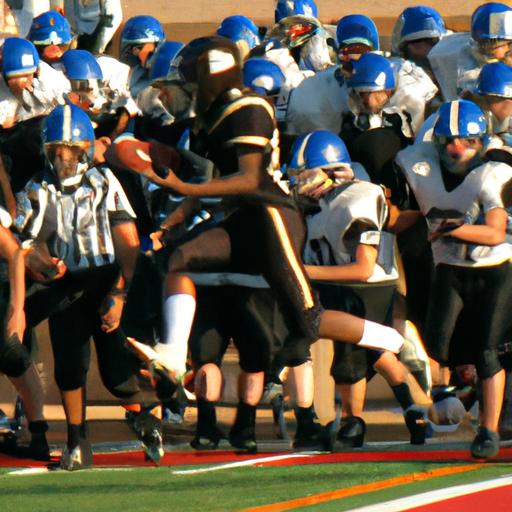
Introduction
As a parent or guardian of a high school football player, you understand the excitement and pride that comes with watching your child take part in this beloved American sport. However, it’s essential to be aware of the financial responsibilities associated with high school football, particularly the insurance costs. In this article, we will delve into the world of high school football insurance costs and provide insights on how to manage this financial burden effectively.
Factors Influencing High School Football Insurance Costs
To comprehend the reasons behind the varying insurance costs for high school football programs, it’s vital to understand the factors that insurers take into account when determining premiums.
Risk Assessment and Injury Statistics
Insurance companies heavily consider the risk associated with high school football programs. They analyze injury statistics, such as the frequency and severity of injuries, to assess the likelihood of claims. Schools with a history of more frequent and severe injuries may incur higher insurance costs.
Type of Coverage Required by State Athletic Associations
State athletic associations often mandate specific insurance coverage for high school football programs. These requirements may vary from state to state, but typically include general liability insurance, accident and medical coverage, equipment and property insurance, and workers’ compensation insurance.
Size and Competitiveness of the Football Program
The size and competitiveness of a high school football program can impact insurance costs. Larger programs with more players may face higher premiums due to the increased potential for injuries. Additionally, schools with successful and competitive teams may experience higher costs, as the risk of injuries and subsequent claims may be greater.
Location and Local Insurance Market Conditions
The location of the school and the prevailing insurance market conditions in the area can also impact insurance costs. Areas with higher rates of litigation or greater demand for insurance coverage may experience higher premiums. Local market conditions, such as the availability of insurers and competition, can influence pricing as well.
Types of Insurance Coverage for High School Football
Now that we have explored the factors influencing insurance costs, let’s delve into the different types of insurance coverage that high school football programs typically require.
General Liability Insurance
General liability insurance protects schools from claims related to injuries or property damage caused by their football program. It covers legal fees, medical expenses, and potential settlements or judgments.
Accident and Medical Coverage
Accident and medical coverage provide financial protection for athletes who sustain injuries during football practices or games. This coverage typically includes medical expenses, hospitalization, surgeries, rehabilitation, and other related costs.
Equipment and Property Insurance
Equipment and property insurance protect the school’s investments in football equipment, such as helmets, pads, and uniforms. It covers damages caused by theft, fire, vandalism, or natural disasters.
Workers’ Compensation Insurance
Workers’ compensation insurance is crucial for schools as it provides coverage for employees, including coaches and staff, who may suffer work-related injuries. It ensures that medical expenses and lost wages are compensated in such cases.
Strategies to Manage High School Football Insurance Costs
Managing high school football insurance costs is essential to alleviate the financial burden on schools and parents. Let’s explore some effective strategies to mitigate these expenses.
Risk Management Practices
Implementing robust risk management practices is vital to minimize the occurrence and severity of injuries, ultimately reducing insurance costs. Schools should focus on proper training techniques, enforcing safety protocols, and conducting regular equipment inspections. By prioritizing player safety, schools can decrease the likelihood of injuries and subsequent claims.
Comparison Shopping for Insurance Policies
Schools should conduct thorough research and comparison shopping when seeking insurance policies for their football programs. Requesting multiple quotes from different insurers allows schools to assess the coverage options and associated costs. It’s important to consider both the affordability and comprehensiveness of the policies to make an informed decision.
Collaborating with Booster Clubs and Community Organizations
Booster clubs and community organizations can play a significant role in alleviating the financial strain of insurance costs. By actively engaging with these groups, schools can organize fundraising events, seek sponsorships, and secure donations specifically for insurance-related expenses. This collaborative effort can help offset some of the financial burdens associated with high school football insurance.
Fundraising and Sponsorship Opportunities
Apart from working with booster clubs, schools can explore additional fundraising and sponsorship opportunities to generate funds specifically for insurance costs. Local businesses, alumni associations, and community foundations may be willing to contribute financially in support of the football program. Establishing strong relationships with potential sponsors can lead to long-term partnerships that assist in managing insurance expenses.
Conclusion
Understanding and managing high school football insurance costs is paramount for schools and parents alike. By comprehending the factors that influence insurance premiums, identifying the necessary coverage types, and implementing effective cost management strategies, schools can alleviate the financial burden associated with insuring their football programs. Remember, prioritizing player safety and exploring collaborative efforts within the community are key to ensuring the long-term viability and success of high school football programs.
For more information on football insurance news and trends, visit Football Channels.